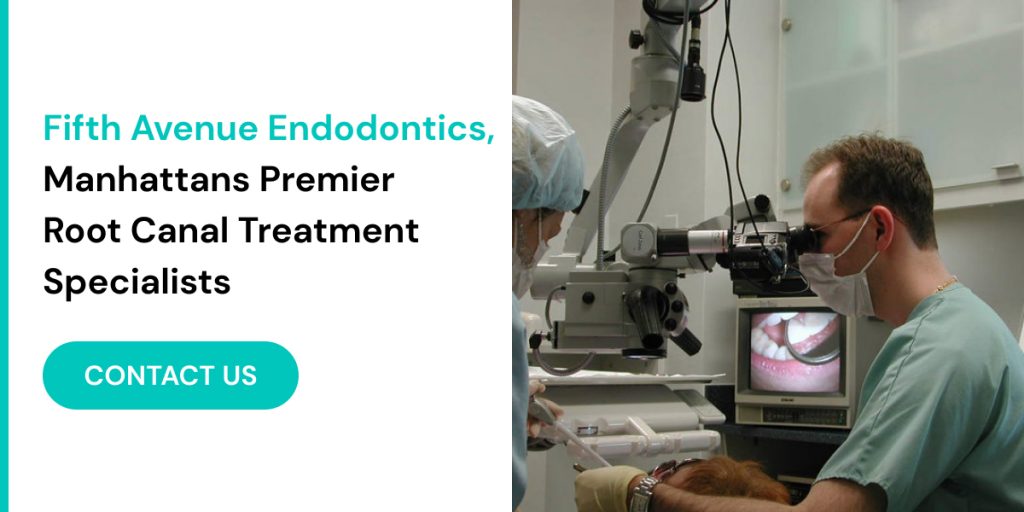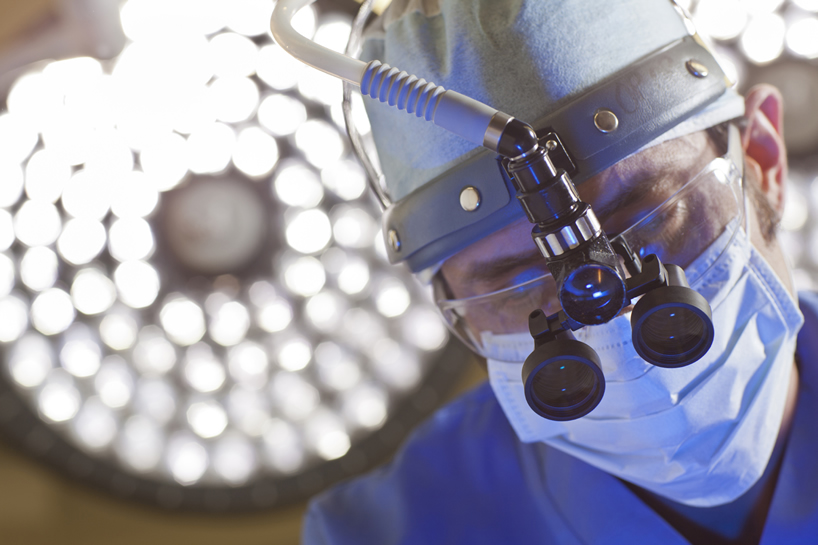When dealing with a cracked tooth, the last thing you want to worry about is pain during the treatment process. Cracked teeth can cause significant discomfort, and timely, effective treatment is crucial to prevent further complications. Fortunately, advancements in anesthesia for endodontic therapy have significantly improved patient experiences, especially for those seeking cracked tooth treatment in New York. These advancements ensure that procedures are not only effective but also as pain-free as possible.
At Fifth Avenue Endodontics, under the expert guidance of Dr. Iofin, patients receive state-of-the-art care that prioritizes comfort and efficacy. Dr. Iofin and his team employ the latest in anesthetic techniques to ensure each patient’s experience is as comfortable and stress-free as possible. This includes the use of computer-controlled local anesthetic delivery systems, which provide precise control over the anesthetic flow, resulting in minimal discomfort during injections. Additionally, the use of buffered anesthetics ensures faster onset of numbness and reduces the burning sensation often associated with traditional local anesthetics.
Fifth Avenue Endodontics’ commitment to patient-centered care means that every patient’s unique needs and concerns are addressed. By staying at the forefront of dental technology and anesthesia advancements, Dr. Iofin ensures that patients undergoing cracked tooth treatment receive the highest standard of care in a comfortable, reassuring environment.
Understanding Cracked Tooth Treatment
A cracked tooth can cause significant discomfort and, if left untreated, may lead to more severe dental issues. Cracks can vary in severity, from minor craze lines that affect only the enamel to more serious fractures that extend into the pulp of the tooth. Each type of crack requires a specific approach to ensure the health and integrity of the tooth are maintained.
Minor cracks, known as craze lines, are superficial and usually do not cause pain or require treatment. However, more serious cracks, such as fractured cusps, vertical cracks, or splits that extend into the root, can cause intense pain and sensitivity, especially when chewing or when the tooth is exposed to extreme temperatures. In some cases, these cracks can lead to infection of the pulp tissue, necessitating more extensive treatment.
Effective cracked tooth treatment in New York often involves endodontic therapy, commonly known as root canal treatment. This procedure is crucial for saving the tooth and preventing further complications. During endodontic therapy, the damaged pulp is carefully removed, and the inner chambers of the tooth are thoroughly cleaned and disinfected. Once the tooth is free of infection, it is sealed with a biocompatible material to protect it from future damage.
After endodontic therapy, a crown is often placed on the treated tooth to restore its strength, functionality, and appearance. This comprehensive approach ensures that the tooth remains healthy and functional, providing long-term relief from pain and discomfort. Regular follow-ups and good oral hygiene are essential to maintain the health of the treated tooth and prevent new issues from arising.
The Role of Anesthesia in Endodontic Therapy
Anesthesia plays a crucial role in ensuring that endodontic therapy, including cracked tooth treatment, is as pain-free as possible. The evolution of anesthetic techniques and medications has transformed patient experiences, making dental procedures more comfortable and reducing anxiety. Pain management is essential for effective treatment, patient comfort, and overall satisfaction. By eliminating pain and discomfort, anesthesia allows endodontists to perform intricate procedures with precision, enhancing the likelihood of successful outcomes.

Types of Anesthesia Used in Endodontic Therapy
Several types of anesthesia are commonly used in endodontic therapy, each tailored to meet the specific needs of the patient and the complexity of the procedure.
Local Anesthesia
Local anesthetics, such as lidocaine, are injected near the affected tooth to numb the area. This prevents pain during the procedure and is typically sufficient for most endodontic treatments. The injection is carefully administered to target the nerves surrounding the tooth, ensuring complete numbness. Local anesthesia is highly effective, allowing patients to remain fully conscious and aware without experiencing any pain. The effect lasts long enough to complete the procedure, after which normal sensation gradually returns.
Sedation Anesthesia
For patients with dental anxiety or those undergoing lengthy procedures, sedation anesthesia can be used in conjunction with local anesthesia. Options include oral sedatives, nitrous oxide (laughing gas), and intravenous (IV) sedation. Oral sedatives are pills taken before the procedure to help patients relax. Nitrous oxide is inhaled through a mask, inducing a state of relaxation while keeping the patient awake. IV sedation involves administering sedatives directly into the bloodstream, providing deeper relaxation. Sedation anesthesia helps reduce anxiety, making the treatment process smoother and more comfortable for nervous patients.
General Anesthesia
In rare cases, general anesthesia may be necessary, particularly for patients with severe anxiety or special needs. This type of anesthesia renders the patient completely unconscious and is typically administered by an anesthesiologist. General anesthesia is reserved for complex or extensive procedures where complete immobilization and deep sedation are required. It ensures that patients have no awareness or memory of the procedure, providing a solution for those unable to tolerate dental treatment under other forms of anesthesia.
Choosing the Right Anesthesia
The choice of anesthesia depends on various factors, including the patient’s medical history, level of anxiety, and the complexity of the endodontic procedure. Dr. Iofin at Fifth Avenue Endodontics carefully evaluates each patient’s needs to determine the most appropriate anesthetic approach. By offering a range of anesthesia options, the team ensures that all patients receive the care they need in the most comfortable and stress-free manner possible.
At Fifth Avenue Endodontics, advanced anesthesia techniques are employed to provide patients with pain-free, effective treatment for cracked teeth and other endodontic issues. The commitment to patient comfort and care is evident in every aspect of the practice, from the initial consultation to the completion of the procedure.
Advancements in Anesthetic Techniques
Recent advancements in anesthesia have greatly enhanced the effectiveness and safety of endodontic therapy, particularly for patients seeking cracked tooth treatment in New York. These innovations ensure that procedures are not only more comfortable but also more efficient, reducing treatment time and enhancing overall patient satisfaction.
Computer-Controlled Local Anesthetic Delivery
One of the significant advancements in anesthetic techniques is the use of computer-controlled local anesthetic delivery systems. These systems precisely control the flow rate and pressure of the anesthetic, resulting in more comfortable injections and better numbness with less discomfort. By delivering the anesthetic at a steady pace, these devices minimize the sensation of the needle and improve the distribution of the numbing agent. This technology is particularly beneficial for patients who experience anxiety about needles or injections, as it provides a more controlled and predictable anesthesia experience.
Buffered Anesthetics
Buffered anesthetics represent another significant innovation in local anesthesia. Traditional local anesthetics can sometimes take several minutes to become fully effective, and their acidic nature can cause a burning sensation during injection. Buffered anesthetics adjust the pH level of the anesthetic solution to match the body’s natural pH, leading to faster onset of numbness and reduced discomfort during injection. This adjustment not only enhances patient comfort but also improves the overall efficacy of the anesthesia, ensuring that the patient remains pain-free throughout the procedure.
Longer-Lasting Anesthetics
Advancements in pharmacology have resulted in the development of longer-lasting anesthetics. These new formulations provide extended pain relief, which is particularly useful for lengthy endodontic procedures such as cracked tooth treatment. By reducing the need for additional anesthetic injections during the procedure, longer-lasting anesthetics streamline the treatment process and contribute to a more positive patient experience. Patients can undergo complex dental treatments with minimal discomfort and improved post-operative recovery, promoting better overall oral health outcomes.
Benefits of Advanced Anesthesia for Cracked Tooth Treatment
The integration of advanced anesthesia techniques into cracked tooth treatment offers several key benefits that enhance patient care and treatment outcomes:
Enhanced Patient Comfort
Advanced anesthesia techniques significantly enhance patient comfort during cracked tooth treatment. Precise control over the delivery of local anesthetics reduces discomfort associated with injections, making the entire treatment process more tolerable for patients. Buffered anesthetics and longer-lasting formulations ensure sustained pain relief, minimizing any potential discomfort during and after the procedure.
Improved Treatment Precision
By providing more effective anesthesia, advanced techniques allow endodontists to perform procedures with greater precision and accuracy. Patients can receive comprehensive cracked tooth treatment without the distraction of pain, enabling the dental team to focus on achieving optimal results. This precision contributes to better treatment outcomes and long-term dental health.

Reduced Treatment Time and Anxiety
Efficient anesthesia delivery systems and longer-lasting formulations contribute to shorter treatment times, benefiting both patients and dental professionals. Reduced treatment duration minimizes patient anxiety and discomfort, improving overall treatment efficiency and patient satisfaction. Patients can undergo cracked tooth treatment confidently, knowing that advanced anesthesia techniques support a positive and stress-free dental experience.
In conclusion, advancements in anesthesia have revolutionized cracked tooth treatment in New York by prioritizing patient comfort, treatment precision, and efficiency. At Fifth Avenue Endodontics, Dr. Iofin and his team utilize these cutting-edge techniques to ensure that every patient receives the highest standard of care with minimal discomfort and maximum effectiveness. By integrating advanced anesthesia into their practice, Fifth Avenue Endodontics continues to uphold its commitment to excellence in endodontic therapy, providing patients with a positive and pain-free dental experience.
Benefits of Advanced Anesthesia for Cracked Tooth Treatment
The benefits of advanced anesthesia for cracked tooth treatment are numerous and significantly enhance the patient experience, ensuring effective and comfortable dental care.
Enhanced Comfort
The primary benefit of advanced anesthesia is the enhanced comfort it provides during cracked tooth treatment. Patients can undergo complex endodontic procedures without experiencing pain, discomfort, or anxiety, making the process much more tolerable. This is particularly crucial for individuals with dental anxiety or those who have had negative experiences with dental treatments in the past. Advanced anesthesia techniques, such as computer-controlled local anesthetic delivery and buffered anesthetics, ensure precise and pain-free numbing, improving overall patient comfort and satisfaction.
Reduced Anxiety
Advanced anesthesia techniques, including sedation options like oral sedatives, nitrous oxide (laughing gas), and intravenous (IV) sedation, play a crucial role in reducing anxiety for patients undergoing cracked tooth treatment. These techniques induce a state of relaxation and calmness, alleviating fears associated with dental procedures. By promoting a more relaxed and stress-free experience, advanced anesthesia encourages patients to seek the necessary treatment without hesitation, ensuring timely and comprehensive dental care.
Improved Outcomes
Effective anesthesia significantly contributes to improved treatment outcomes for cracked tooth treatment. When patients are comfortable and relaxed, endodontists can perform procedures more efficiently and accurately. Advanced anesthesia techniques enable precise treatment delivery, allowing for meticulous cleaning, disinfection, and sealing of the tooth’s inner chambers. This results in better treatment success rates and promotes long-term dental health. Patients benefit from reduced post-operative discomfort and faster recovery times, enhancing their overall oral health outcomes.
In conclusion, the integration of advanced anesthesia techniques into cracked tooth treatment not only enhances patient comfort and reduces anxiety but also improves treatment precision and overall outcomes. At Fifth Avenue Endodontics, Dr. Iofin and his team prioritize the use of these cutting-edge techniques to ensure that every patient receives the highest standard of care in a comfortable and stress-free environment. By leveraging advanced anesthesia, Fifth Avenue Endodontics continues to uphold its commitment to excellence in endodontic therapy, providing patients with a positive and pain-free dental experience.
The Expertise of Fifth Avenue Endodontics
At Fifth Avenue Endodontics, Dr. Iofin and his team are dedicated to providing the highest quality of care for patients requiring endodontic therapy. Their commitment to using the latest advancements in anesthesia ensures that patients receive pain-free and comfortable treatment for cracked teeth and other endodontic issues.
Patient-Centered Care
Dr. Iofin and the team at Fifth Avenue Endodontics prioritize patient-centered care. They take the time to understand each patient’s unique needs and concerns, tailoring their approach to ensure the best possible experience. By utilizing advanced anesthesia techniques, they create a comfortable and stress-free environment for all patients.
State-of-the-Art Technology
Fifth Avenue Endodontics is equipped with state-of-the-art technology to provide cutting-edge endodontic treatment. From computer-controlled anesthetic delivery systems to advanced imaging techniques, the practice is at the forefront of dental innovation. This commitment to technology ensures that patients receive the most effective and efficient care available.
Comprehensive Treatment Options
In addition to cracked tooth treatment, Fifth Avenue Endodontics offers a comprehensive range of endodontic services. Whether patients require root canal therapy, retreatment, or surgical procedures, they can trust Dr. Iofin and his team to deliver exceptional care with a focus on comfort and results.

Conclusion
Advancements in anesthesia for endodontic therapy have revolutionized the patient experience, making treatments like cracked tooth treatment in New York more comfortable and stress-free. At Fifth Avenue Endodontics, Dr. Iofin and his team leverage these advancements to provide top-tier care that prioritizes patient comfort and successful outcomes.
By staying at the forefront of dental technology and anesthetic techniques, Fifth Avenue Endodontics ensures that patients receive the best possible care for their endodontic needs. Whether you’re dealing with a cracked tooth or another dental issue, you can trust Dr. Iofin and his team to provide compassionate, expert care that keeps your comfort at the forefront.
When it comes to cracked tooth treatment in New York, the advancements in anesthesia techniques have made a significant difference in patient care. With experts like Dr. Iofin at Fifth Avenue Endodontics, you can be assured of a pain-free and effective treatment experience.

